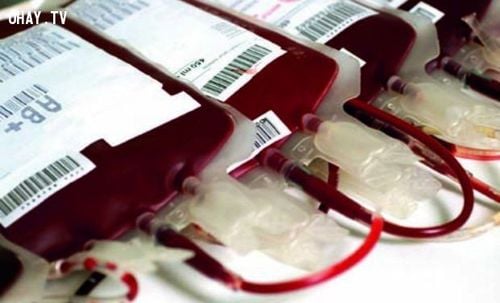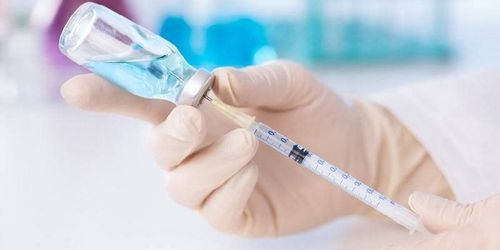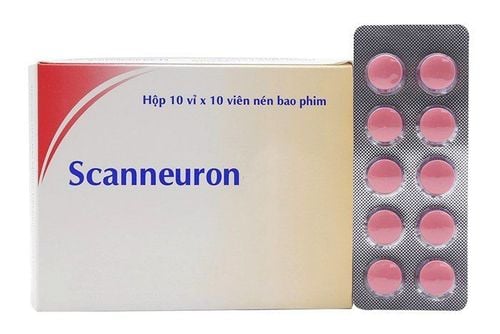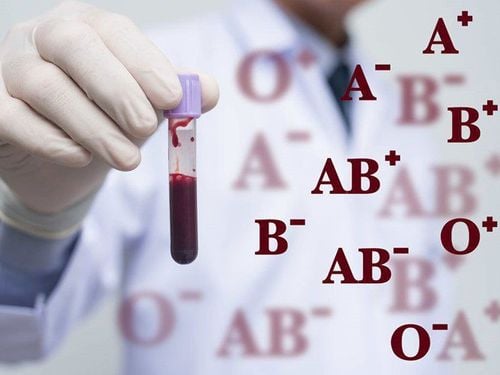This is an automatically translated article.
The article was professionally consulted by Specialist Doctor I Huynh Kim Long - Emergency Resuscitation Doctor - Emergency Resuscitation Department - Vinmec Da Nang International General Hospital. Dr. Huynh Kim Long has extensive experience in the treatment of Resuscitation - Emergency and Acute Stroke in adults.A blood transfusion is a condition in which a patient receives blood or blood products (erythrocytes, platelets, plasma) from another person. This is a fairly common measure to restore lost blood or correct abnormalities in the blood that have no other alternative. Blood transfusion does not cause pain, it may be slightly uncomfortable because the needle is attached to the arm vein, but there are still cases of dangerous complications that need to be handled promptly.
1. Common blood transfusion complications
Blood transfusion accidents are classified into different types, caused by typical causes include the following groups:1.1 Immune transfusion complications Acute hemolytic transfusion reactions:
Usually due to whole blood transfusion Partial or dissimilar to the ABO blood group system, causing anti-A or B antibodies in the patient's plasma to cause agglutination of red blood cells with corresponding antigens, leading to acute intravascular hemolysis. Patients often present with fever, chills or back pain (due to anemia and muscle spasticity), dyspnea, respiratory failure, anuria, hypotension and shock, and hemoglobinuria. These clinical manifestations usually occur in 3 stages: shock phase, anuria phase and recovery phase. Delayed hemolytic reaction after blood transfusion:
Caused by secondary immunity against red blood cell antigens produced about 1-2 weeks after the recipient is exposed to the foreign antigen. Patients usually do not have specific clinical manifestations for hemolysis, if there is a severe hemolytic crisis, there may be manifestations such as malaria, shivering, jaundice, anemia, ... Fever reaction after blood transfusion is not caused by blood transfusion. Hemolysis:
Caused by mismatch of white blood cells and platelets between the donor and the recipient leading to the release of pyrogens. Fever that may be accompanied by chills occurs during or after blood transfusion. Allergic reactions due to blood transfusion:
Urticaria (pruritic papules): caused by allergens in plasma and other plasma-containing products leading to the release of histamine, often in people with a history of allergy. Anaphylactic reactions: patients have manifestations such as anaphylaxis, shortness of breath, hypotension, bronchospasm, vomiting, abdominal pain, sweating...

Caused by an immune response from the patient's body to the co-antigens in the infusion, usually after a blood transfusion or pregnancy. Patients often have manifestations of acute or delayed hemolysis after transfusion or have a state of unresponsiveness to blood transfusion. In neonates, immune thrombocytopenia is manifested by postpartum haemorrhagic syndrome, with manifestations of severe bleeding such as hemorrhagic brain-meninges, gastrointestinal bleeding. 1.2 Blood transfusion complications due to infection Hepatitis caused by blood transfusion: The most common is hepatitis caused by HCV. Patients with hepatitis often have little or no jaundice, and may have fatigue, poor appetite, gastrointestinal disturbances, joint pain, or low-grade fever. HIV and HTLV-1 infection: Thanks to routine HIV screening, the rate of HIV infection after blood transfusion is low. Malaria parasitic infections, spirochetes of syphilis, and bacteremia are also risk factors for acquiring blood transfusions. 1.3 Accidents due to large volume blood transfusion Circulatory overload: when a large amount of blood is transfused at a fast rate, it causes circulatory overload in patients with heart or lung disease, causing right heart failure, acute pulmonary edema, cyanosis, difficulty breathing,... Citrate toxicity: due to side effects of citrate used to prevent blood clotting, cardiac dysfunction due to hypocalcemia. Hyperkalemia: due to potassium contained in the blood infusion after the preservation process.

2. How to handle a blood transfusion accident?
Treatment of complications during blood transfusion depends on the severity of the accident and takes appropriate measures.2.1 Initial management Immediately lock the transfusion set to prevent accidental blood from continuing to enter the recipient's body. Assess the patient's vital signs. Identify or exclude the risk of transfusion of incompatible red blood cells, through: checking, comparing patient records, determining ABO blood group. Determine the hazard level. 2.2 For mild reactions Blood transfusions should be slowed down and anti-allergic drugs used. Closely monitor the clinical condition, if there is no improvement or worsening, it should be treated as moderate reactions. 2.3 For moderate reactions Immediately discontinue transfusion. Maintain intravenous line with 0.9% NaCl physiological saline solution. Treat appropriate symptoms such as warming when cold or anti-allergy, antipyretic. Monitor urine color and flow.

Please dial HOTLINE for more information or register for an appointment HERE. Download MyVinmec app to make appointments faster and to manage your bookings easily.














